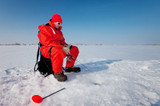Top 9 Fishing Gear Essentials for First-Time Anglers
Starting your fishing journey is an exhilarating step into the great outdoors, filled with new experiences. While choosing fishing gear essentials might initially seem daunting, it’s integral to learning the sport. With so many options and accessories to explore, every step you take is a move toward becoming a seasoned angler.
Discover the fundamentals of fishing gear to ensure your angling adventures are enjoyable and fruitful. Familiarize yourself with essentials like rods, reels, bait, and safety gear.
Understanding Different Types of Fishing
Exploring different fishing spots adds an exciting dimension to the experience of angling. The peacefulness of freshwater lakes, the majestic vastness of the ocean, and the graceful art of fly fishing each contribute something special, enhancing your overall fishing experience.
-
Freshwater Fishing
Freshwater fishing is ideal for beginners. Lakes, ponds, rivers, and streams are full of bass, trout, catfish, and walleye, making an exciting catch and a tasty meal.
You can fish from the shore, on docks, or from boats and try various methods such as bait, spin, or ice fishing in cooler weather. Spinning rods and reels are ideal for these activities because they are simple to use and adaptable for different fishing techniques.
-
Saltwater Fishing
Saltwater angling offers varied experiences across settings such as coastal inshore waters, the vast deep sea, and remote offshore areas. These environments are home to a unique assortment of larger fish species, including tuna, marlin, cod, and sea bass.
Equipment for saltwater fishing, including sturdier rods, reels, and lines, is designed to endure the challenges of larger fish and the corrosive marine environment.
Anglers use techniques like trolling, surf fishing, deep-sea fishing, and fly fishing, each demanding unique skills and equipment like specialized trolling motors and downriggers.
-
Fly Fishing Basics
Fly fishing is a unique and artful approach to fishing, typically enjoyed in freshwater rivers and streams to catch trout, salmon, and bass, but it’s also adaptable to saltwater environments.
Fly fishing uses a light lure, called a fly, that mimics local insects or baitfish. This method involves specialized equipment such as a fly rod, reel, and a specially crafted line. Key to this technique is learning the art of casting, which involves a rhythmic whipping motion of the line back and forth, enabling the angler to place the fly with precision.
For novice anglers, this fishing approach involves mastering a complex casting technique, gaining insights into fish behavior, and wading into the water to access prime fishing locations.
Essential Fishing Gear
Starting your fishing journey becomes even more exciting when equipped with the right gear. Essential items include a suitable rod and reel, various bait and lures, and tackle like hooks, lines, and sinkers. Additionally, considering the environment you’ll be fishing in, items like a fishing net, appropriate clothing, and safety equipment such as life jackets are important.
-
1. Fishing License
Getting a fishing license is an essential first step in your fishing journey. It keeps you on the right side of the law, avoiding potential fines, and plays a vital role in conservation. Your license legally defines where you can fish and contributes to vital conservation work, ensuring the health and sustainability of aquatic environments for future generations of anglers.
Different states provide a range of fishing license options, including single-day, short-term, annual, or lifetime permits. To select the proper license, consider your age (some states have a minimum age), residency status, and how long you intend to fish. Review your state’s specific rules and regulations, as the application process and associated fees can differ from place to place.
Licenses are available for purchase at the following locations:
- Local sporting goods stores. Fishing licenses are often available at local sporting goods stores or tackle shops. The staff at these locations can assist you with purchasing and provide guidance.
- Online platforms. You can apply for a fishing license and pay the fees by visiting the official website of your state wildlife or fisheries department.
- Government offices. You can also obtain a fishing license in person from government offices or designated license-issuing agents like the Department of Natural Resources, Fish and Wildlife Service, or the county clerk’s office.
-
2. Rod and Reel
If you’re new to angling, you need to select the appropriate rod and reel for a seamless experience. Spinning reels and rods are an excellent choice for beginners due to their user-friendly nature. They offer versatility and ease of handling and are available in a range of lengths and weights to accommodate various fishing styles and environments. This adaptability makes them perfect for those just beginning their fishing journey.
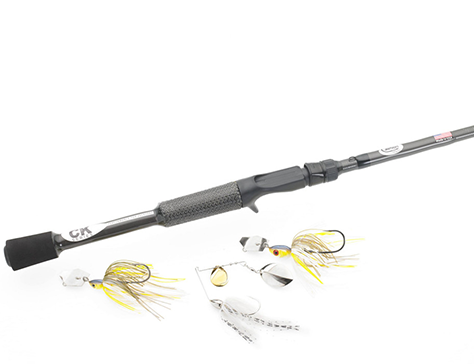
When targeting species like panfish, smallmouth bass, and trout, ultralight or light spinning rods are a good choice. For instance, the Cashion Fishing Rods CK Series medium-heavy power, fast-action spinning rod is ideal for beginners. It’s specifically designed for worming and jigging techniques. This rod features a sturdy one-piece design, is made from carbon fiber pre-preg for durability, and comes with a custom cork handle that enhances sensitivity, helping beginners easily detect bites.
Pair your spinning rod with a sturdy reel for reliability and ease of use. The Penn Spinfisher VII 4500LL spinning reel, with a full metal body, HT-100 drag system, and Live Liner feature, is ideal for saltwater fishing. Its smooth drag system allows control over resistance, enhancing your ability to reel in the catch.
-
3. Fishing Line
Knowing the various types of fishing lines is key to a successful fishing experience. The three main types are monofilament, braided, and fluorocarbon lines.
- Monofilament. Monofilament lines, crafted from a single strand of plastic like nylon, are versatile and user-friendly, making them an excellent option for beginners. Their stretch capacity provides plenty of flexibility when a fish tries to dart away.
Additionally, monofilament lines are less visible underwater, reducing the chances of startling fish. They also float better than other fishing lines, which benefits those using topwater lures or a floating presentation.
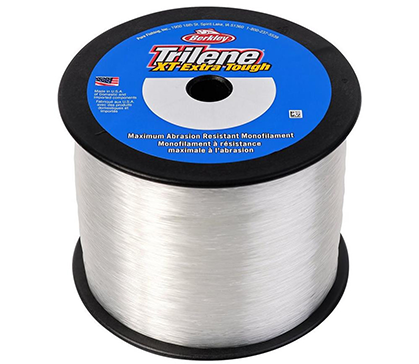
The Berkley Trilene XT monofilament line is The Berkley Trilene XT monofilament line is exceptionally durable and designed to withstand rough conditions. It boasts over 45% more flexibility than standard lines, providing superior abrasion resistance and enhanced knot strength. This versatile line is an excellent choice for flipping, pitching, or casting.
- Braided. Braided lines are known for their exceptional strength and heightened sensitivity. Their minimal stretch allows for better detection of bites and improved hook-setting capability. These qualities make braided lines particularly effective for fishing in areas with dense vegetation and for catching large fish species.
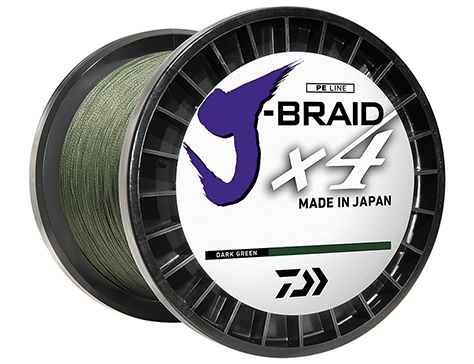
The Daiwa J-Braid x4 braid, in a natural dark green hue, provides 300 yards of 20 lb. test line. This line stands out for its exceptional abrasion resistance and easy knot tying. Its 4-carrier construction offers a thinner diameter, allowing you to spool more line onto your reel.
Crafted from premium Japanese Dyneema, this durable line is designed to blend in with the environment. It’s ideal for tying hooks or lures to the line without a leader.
- Fluorocarbon. Fluorocarbon lines excel in clear water conditions due to their near invisibility underwater. They offer less stretch compared to monofilament lines, resulting in improved sensitivity. Fluorocarbon is frequently used as a leader material, often paired with other types of fishing lines.
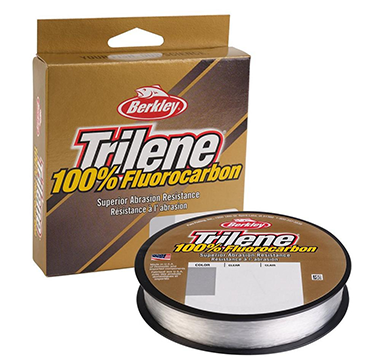
Berkley Trilene 100% fluorocarbon delivers outstanding shock strength, abrasion resistance, and knot strength. This line sinks quickly, enhancing sensitivity and reducing water bowing for better bite detection and hook setting. Its near-invisibility in water and strong, low-memory formula enable superior casting.
-
4. Tackle
Having the proper terminal tackle is vital for hooking and landing fish. Assembling the right tackle helps you present your bait effectively to catch more fish. A standard tackle setup typically includes:
- Hooks. Carry an assortment of sizes and styles of hooks. Short-shank live bait hooks in smaller sizes are perfect for panfish. Circle hooks in larger sizes work well for catfish. Having treble hooks on hand helps rig artificial lures.
- Sinkers. Split shot sinkers are useful for adding casting weight and ensuring your bait reaches the strike zone. The removable variety, such as Eagle Claw split shots, allows for quick and easy weight adjustments. Slip sinkers, on the other hand, are great for achieving longer casts. Properly weighting your rig is crucial for a successful fishing experience.
- Bobbers. Bobbers signal bites and keep baits suspended at predetermined depths. Opt for slip bobbers, which let you change the depth your bait runs at. Gummy bobber stops like Carlson’s grip the line securely to fix slip bobbers at a desired position.
- Tackle storage. Stay organized on the water with a tackle box with adjustable dividers. Invest in one with plenty of storage for all your terminal tackle. Berkley soft bait binder bags are an excellent option and can store up to 21 standard bags.
-
5. Bait and Lures
Choose the right bait and lures to attract fish and encourage bites. Both live bait and artificial lures are crucial components in an angler’s toolkit.
- Live bait. Live bait like worms, minnows, and shrimp are easy for beginners and effective on many freshwater and saltwater species. Keep bait in a cooler and aerated to prevent spoilage. Popular live bait choices include nightcrawlers, minnows, leeches, and grass shrimp.
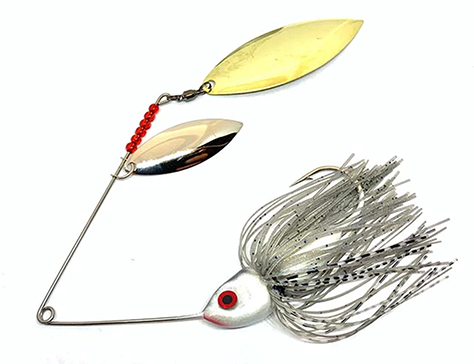
- Artificial lures. Artificial lures allow anglers to mimic prey with various actions and profiles. Popular artificials include spinners, spoons, crankbaits, soft plastics, and jigs in colors that attract fish. Consider options like the Venom Deep Eye spinnerbait, which combines a flashing willow leaf blade with a weighted swimbait body for excellent vibration and action when choosing lures.
For a diving minnow bait, choose time-tested lures like the Rapala Original Jointed minnow, which dives and zig-zags enticingly with its hand-tuned actions. When beginning, concentrate on reliable and adaptable lure styles and sizes. As your expertise grows, expand your lure assortment with specialized varieties suitable for
the fish found in your local area.
-
6. Fishing Knife and Pliers
Every angler should have a quality fishing knife and pliers as part of their essential gear. Choose a sharp, stainless steel fishing knife that opens easily with one hand, ideal for neatly cutting fishing lines, trimming leaders, and preparing bait. Needle-nose pliers are invaluable for swiftly removing hooks that have been swallowed, extracting treble hooks lodged in fish, and crimping lines and leaders.
Select pliers made from aluminum or stainless steel that include cutters. Attach your knife and pliers to a lanyard for convenient access and easy rinsing in water. These multifunctional tools enhance the safety and efficiency of your fishing experience.
-
7. Fishing Net
Using a fishing net instead of gaffing is a more humane method to secure fish and avoid losing catches near the boat or shore. Landing nets help scoop up hooked fish and get them aboard the boat or onto the shore.
For beginners, a simple nylon collapsible fishing net about 18"-24" in diameter will handle most freshwater species and some smaller saltwater fish, but you’ll need a larger net hoop for bigger fish species.
When practicing catch and release, it’s important to always moisten the net before use to safeguard the fish’s protective slime coating.
-
8. Personal Safety Gear and Fishing Attire
When fishing, prioritizing safety and comfort is as crucial as equipping yourself with the right gear. Appropriate personal safety equipment and clothing are essential for making your fishing excursion enjoyable and safe.
- Safety equipment. Use sunscreen to protect against painful sunburn, and wearing a hat or face shield can reduce sun glare, improving visibility. Always carry a whistle and flashlight for emergencies.
If your fishing adventure involves wading or boating, a flotation device adds an extra layer of protection, while insect repellent keeps annoying bugs at bay.
- Fishing attire. Selecting appropriate fishing attire enhances your comfort. Choose shoes with non-slip soles for safety, and wear quick-drying pants and long-sleeve shirts for day-long comfort. A hat or face gaiter for sun protection and polarized sunglasses help minimize glare, improving your visibility on the water.
Lightweight fingerless gloves provide a firm grip, and carrying a waterproof jacket, waders, or a raincoat is vital to staying dry during sudden weather shifts.
Layering your clothing enables you to adjust to changing weather conditions, and moisture-wicking materials are perfect for warmer days. Always bring a change of dry clothes to stay comfortable regardless of the elements.
-
9. First Aid Kit
A well-prepared angler always has a complete first aid kit for unforeseen circumstances. Ensure your fishing first aid kit contains the following:
- Antiseptic wipes and ointments: To clean and disinfect wounds and cuts, preventing infections in the field.
- Adhesive bandages: Essential for covering minor cuts and abrasions for quick healing.
- Sterile gauze and tape: For larger wounds or to secure bandages in place.
- Scissors and tweezers: Handy for cutting medical tape and clothing or removing splinters and hooks.
- Pain relievers: Over-the-counter pain medications to alleviate minor aches or pains.
- Electrolyte powder: This product dissolves easily in water and supplies vital minerals to help prevent dehydration and heat-related injuries from sun exposure.
- Insect sting relief: A must-have for areas with biting insects to soothe discomfort from stings.
Gearing Up for a Great Start in Fishing
Equipping yourself with quality fishing gear essentials prepares you to head out on the water confidently. Investing in the right accessories improves your comfort, safety, and success as an angler.
Browse our wide selection of rods, reels, line, tackle, tools, bait, and everything you need for a great day on the water. Our fishing professionals can also provide recommendations and advice as you prepare for your first fishing adventure. Contact us online or call us for more information on our products.
Recent Posts
-
Ice Fishing Safety 101: What Every Angler Needs To Know
Ice fishing offers a unique thrill, but safety should always come first. Knowing the basics of ic
-
Ice Fishing Season Prep: Your Essential Pre-Ice Checklist
When the lakes start freezing, it’s time to swap your boat for an ice auger. But before you hit the




